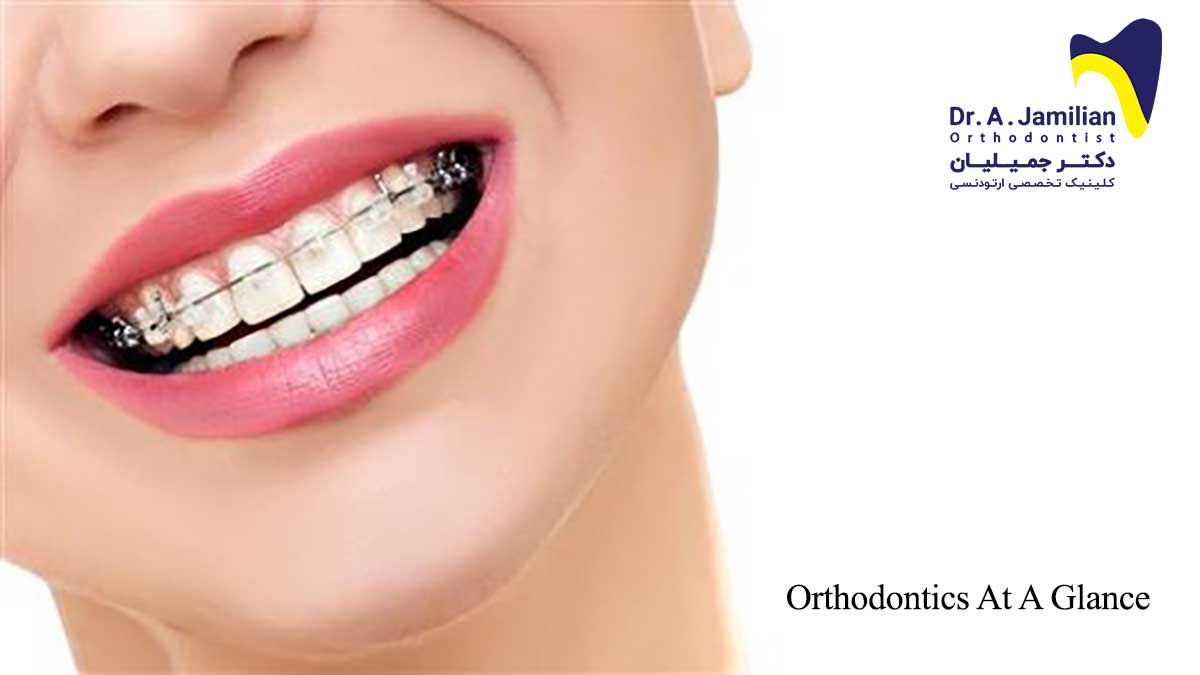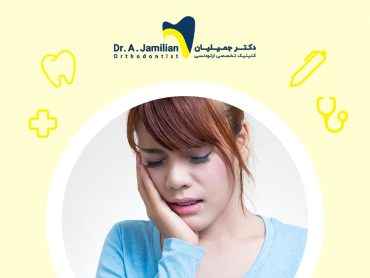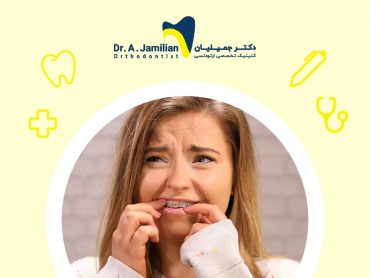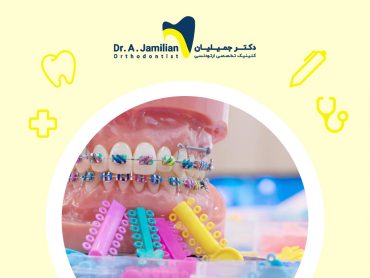Orthodontics is a dental specialty aiming at arranging and aligning teeth and coordinating jaws. One of the main tasks of orthodontics is to diagnose, prevent and treat maxillofacial deformities.
Orthodontics can be done by fixed or removable treatments, tooth-colored (ceramic, composite) brackets, invisible orthodontics by the lingual system (brackets behind the teeth) or invisible orthodontics with transparent plaque (Invisalign). Fixed orthodontics can be performed through Straight, Edgewise, Roth or Damon methods. In addition, novel techniques such as the miniscrew can be used for the treatment of anomalies.
Types of orthodontics
The orthodontist may choose one of the fixed or removable orthodontic methods for the treatment of maxillofacial abnormalities or both. In general, fixed orthodontics is used to treat dental malformations and removable orthodontics is used to treat jaw malformations.
Fixed orthodontics
Fixed orthodontics means that the patient cannot remove the orthodontic appliance. In fixed orthodontics, the jewel-like components called brackets are attached and fixed to the tooth. Unlike removable orthodontics, fixed orthodontics does not depend on patient cooperation.
The treatment by fixed orthodontics lasts 2 years on average, which may be continued according to the malformation type and severity. No solid foods should be eaten during the course of fixed orthodontics such as scorched rice, corn, seeded fruits and olives. Otherwise, the bracket is detached from the tooth and should be replaced with a new one, resulting in prolonged treatment and tooth damage. During this period, the patient needs special care to prevent teeth discoloration and decay.

In fixed orthodontic treatments, the tooth can be moved 1 mm per month, which is not sensible during the treatment period. In some cases, a tooth may be extracted based on the malformation type. In these patients, the teeth are moved towards empty spaces and tooth movement is well visible in the first few sessions. The patient should be visited for treatment once a month. At each session after activating the elastic bands, wires or springs, the patient may feel some pain that gradually decreases in the first week. Occasionally during the examination sessions, a part of the wire may be moved out of the end of the teeth due to tooth movement, causing the patient to feel an irritating sharpness. In this case, an emergency visit should be scheduled as soon as possible by the patient to shorten the wire end.
Objective
Fixed orthodontics aims at moving the teeth to the right space, adjusting the crowded teeth and improving the relationships between teeth. In fixed orthodontics, the brackets are attached to the teeth and a wire is passed through the brackets, and very delicate elastic bands are hooked to the brackets. These white or colored elastic bands are replaced in each session but the wires may not be replaced, while the brackets remain in the mouth until the end of the treatment period.
In some cases, a tooth should be extracted based on the type and severity of malformation and age. The teeth can be of any type, being usually the maxillary and mandibular premolars. As a rule, canines should never be extracted, even if they are completely exposed or impacted unless the impacted tooth is in a position that cannot be moved. Premolars are usually extracted and the canines are placed in the proper space. Depending on circumstances, a mandibular anterior incisor may be extracted occasionally. Dental gaps can be filled by correcting the crowded teeth or by retracting the maxillary or mandibular anterior teeth.
The gaps caused by tooth extraction are completely filled through movement of other teeth, and the patient will have no problem with the space between the teeth. Patients are usually concerned that the space of the extracted teeth will be left empty, but this is irrelevant if tooth extraction is correctly ordered. As a result of orthodontics and teeth movement, the space may be considered for the growth of the third molars or wisdom teeth. Extraction of wisdom teeth does not lead to arrangement of the anterior teeth and the space of wisdom teeth cannot be used to align the canines or anterior teeth.
Teeth can be moved through fixed orthodontics at any age provided that the teeth and gums are healthy. However, the rate of tooth movement slightly decreases with aging. However, as a general rule, patients are recommended to be treated before puberty to use the opportunity of jaw development to correct abnormalities.
Invisible orthodontics
The purpose of this method of orthodontics is invisibility of orthodontic brackets and appliances. There are 3 ways to make orthodontic appliances invisible.
- Lingual system: In this method, the orthodontic brackets are attached to the back of the maxillary and mandibular teeth. This system is not recommended because it can affect the tongue during speaking and eating and may break and be detached during washing.
- Invisalign crystal clear system: In this method, clear plaques are used to align the teeth with very little irregularity in very limited cases at the discretion of the orthodontist. This method requires a visit every 2 weeks and the plaque is replaced in each session.
- Tooth-colored brackets system: The main and efficient method is to attach clear, colorless and invisible, often ceramic brackets on the patient’s teeth. This method has good strength and beauty without causing any problem for the patient’s tongue or speech.
Lingual orthodontics
In the lingual method, components or appliances are placed behind the teeth adjacent to the tongue. Despite the use of metal brackets, the lingual appliances cannot be seen because of locating behind the teeth. Invisibility is the main advantage of such appliances. Attachment of brackets to the teeth back can irritate the patient’s tongue and affect eating. Another problem with lingual treatments is its high cost, which is much more expensive than conventional metal appliances. Treatment with these appliances is more difficult for orthodontists than conventional treatments in terms of accessibility. Therefore, orthodontists usually do not recommend the lingual method.
Orthodontics with tooth-colored brackets
In this treatment method, ceramic or composite brackets are used instead of the commonly-used metal brackets, and the rest of the procedure is same as in the conventional methods. In this method, the orthodontic wire is passed through the ceramic brackets, and white or tooth-colored coated wire can be used at patient request. Tooth-colored brackets are selected by patients who are looking for less attractive brackets.
These toot-colored brackets attached to the outer surface of the teeth are visible from a very close distance, but are less visible in daily activities, satisfying patients with the appearance of orthodontics. It should also be noted that teeth movement in this method is slower than metal brackets, resulting in a longer treatment period.
Orthodontics by Damon method
Damon is one of the newest treatment methods. Normally, the wire should be attached to orthodontic brackets by very small elastic bands, but in the Damon method, the wire is attached to the brackets through a self-ligating mechanism with sliding opening and closing capability. In the Damon system, the wire is attached to the bracket through a self-ligating mechanism; therefore, this system no longer requires elastic bands around the brackets, and hence patients can easily clean the wire and brackets; while microorganisms can easily accumulate around the elastic bands in conventional orthodontic methods, making it difficult to maintain hygiene, especially for young children. Hygiene around the brackets is improved in this system and discoloration does not occur around the brackets.

Strengths and weaknesses of Damon orthodontics
There are many advertisements about the Damon system such as no need for teeth extraction, reduced length of treatment, increased distance between patient visits and reduced pain, but all of these depend on the type and severity of malformation, age of visit and many biological factors which vary among patients and are determined upon examination by the orthodontist; for example the need for tooth extraction and the treatment duration. In fact, the final decision on a tooth extraction depends on patient’s conditions and the discretion of the orthodontist, rather than the therapeutic tools. Despite recent technological advances, no therapeutic tool has been developed and introduced to reduce the duration of treatment. There are many contradictory articles on the reduction of treatment duration using this system. Regarding orthodontics pain reduction with the Damon system, there is some pain and discomfort in the first few days after applying the wires. Therefore, there is no significant difference between the Damon system and the conventional standard procedures in terms of pain level. All claims about a new product are confirmed by orthodontists when it is approved by reputable scientific research centers. Claims made by reputable scientific centers are incorrect without considering accredited studies by reputable scientific research centers. No significant difference has been reported between the Damon system and other appliances in the literature.
Removable orthodontics
Removable orthodontics means that the patient is able to remove the orthodontic appliance from the mouth. Removable orthodontics includes two general groups, namely simple removable plaques for slight tooth movement and removable plaques used to correct jaw abnormalities such as mandibular or maxillary retrognathia. Removable appliances are used to arrange teeth with slight irregularity in patients who are young for fixed orthodontics. In other words, deciduous teeth are not replaced by permanent teeth. On the other hand, removable appliances are also used to move the jaws, and to extend the mandible or the maxilla based on the patient’s need. Removable plaques can be used independently or with fixed orthodontics. After each meal, the removable orthodontic plaque should be brushed with a toothbrush and toothpaste and then washed under running water. During the first few days of removable plaques, the patient may suffer from speaking problems and excessive mouthwatering, which is usually resolved after a few days. Some removable plaques have screws. Only 0.25 mm of the plaque is opened in each session, extending the jaw transversely. Opening of the screw may create a gap between the teeth (especially between the anterior teeth) which is not disturbing; this, in fact, indicates a response to the treatment. Opening the screw may be associated with some pain that can be relieved by an analgesic such as acetaminophen.
Regarding the screwed plaque, the screw closing process and time may vary depending on the treatment progress, and the orthodontist will advise the patient in this regard during treatment visits. If the plaque is not used for several days, it may not be contained in the mouth due to discrepancy of the plaque with the mouth. This is especially true for screwed plaques. When the patient does not use the plaque for several days, the plaque will not sit in the mouth due to recurrence of the therapeutic results. This problem should be resolved through re-molding and providing the patient with another plaque. The screwed plaques must be tightened at specified intervals as directed with the wrench given. To this end, the wrench should be inserted in the hole at the end of the arrow and twisted towards the tip of the arrow one turn up to the end.
Never wrench the screw more than the stated value; if you forget to tighten the screw at the right interval, do this as soon as possible and follow the new tightening intervals. Screw tightening separates and enlarges two half of the plaque, resulting in jaw enlargement. Removable plaque slightly loosens between sessions, which should be fastened by the orthodontist at each visit and the patient’s condition and the status of the plaque should be evaluated according to the patient’s needs and treatment progress. The patient may also need additional plaques. Removable appliances are usually used until permanent tooth eruption and proper fixation of the jaws. The number of orthodontic plaques required is dependent on the patient’s developmental process, the type and severity of abnormality, the patient’s involvement in the use of orthodontic appliances, and physiological response of the patient.
In some patients, removable plaques should always be used except during eating and exercise, while they should be at night in other patients. The time to use the removable plaque varies according to the patient’s conditions, and the patient is informed when receiving the plaque. With removable orthodontic plaques, the jaw can be moved and the teeth can be adjusted slightly. But perfect alignment of the teeth requires fixed orthodontics after eruption of all permanent teeth. Drinking fluids is not prohibited with removable orthodontic plaques. When removing the plaque from the mouth, be sure to put it in the plaque box and avoid using tissue. Each time the plaque is put in the mouth, it must be pressed thoroughly to be placed in the correct place in proper contact with the oral mucosa. Otherwise the plaque will not function properly. If the plaque is placed incorrectly for any reason, contact the orthodontist as soon as possible. Extraoral appliances such as cervical or head tapes should be rinsed with cold water and soap. Clean the thin parts with wet cloth and soap foam. Extraoral appliances should usually be used for 14 to 16 h.
Removable and fixed orthodontic difference
Fixed orthodontic appliances are placed and removed on the teeth by an orthodontist. removable orthodontic appliances, on the other hand, are easily inserted and removed by the patient himself. There is a difference between fixed and fixed orthodontics in the way they are used. Also, each of these devices is used for a specific type of jaw and tooth malocclusion.
Orthodontic functional appliances
Orthodontic functional appliances are removable devices used to protract the mandible and correct Class II malocclusions. Maxillary and mandibular dysfunctions of Class II malocclusions are treated by these appliances which are divided into two main groups of fixed and removable. Fixed appliances are those fixed on the teeth and cannot be removed by the patient. As the main advantage of fixed orthodontic appliances, the patient should not regularly place them. But this type is associated with difficult observance of hygiene and requires more precision. The removable appliances can be removed and replaced any time by the patient, and hence observance of hygiene is easier with removable appliances than fixed orthodontic appliances, but they require greater patient collaboration to achieve an appropriate therapeutic response.
Functional fixed appliances
There are various types of fixed appliances such as Herbst and MARA.
Functional removable appliances:
There are also different types of removable functional appliances such as Frankel, Bionator, Activator, R-appliance and Farmand.
Functional R-appliance: This appliance was first introduced by Dr. Jamilian and Dr. Showkatbakhsh in orthodontics and its therapeutic benefits have been published in research papers in internationally accredited journals and have been discussed in national and international congresses. Click on the link below to view the articles related to this device.
- Treatment effects of the R-appliance and twin block in Class II division 1 malocclusion. European Journal of Orthodontics
- Treatment effects of R-appliance and Fränkel-2 in Class II division 1 malocclusions. European Journal of Pediatric Dentistry
- Treatment effects of R-appliance and anterior inclined bite plate in class II, division I malocclusion Applied Oral sciences
- R-appliance: a different design in functional therapy in Class II Division I malocclusion. International Journal of Orthod Milwaukee



